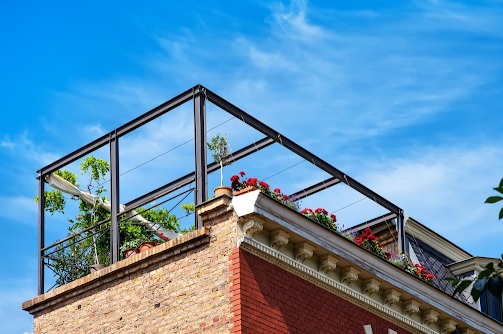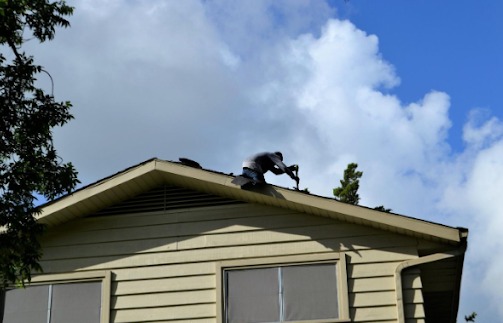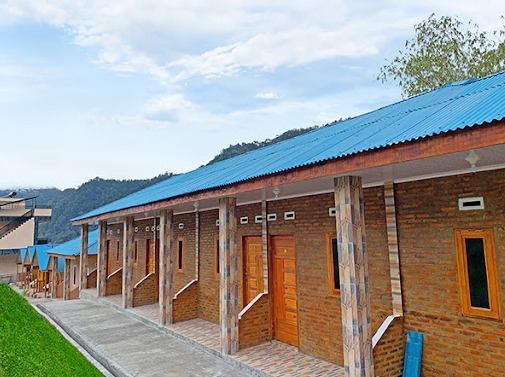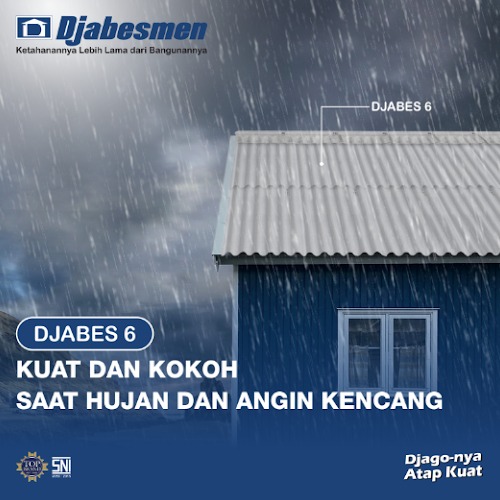Warning Signs: Rusty Roof Demands Attention!

The early signs of rusting roofs are commonly shrugged off, but they’re actually early warnings of potential serious problems. These issues range from mere aesthetics to risking the overall strength and safety of your building’s structure.
In tropical climates like Indonesia, the mix of high humidity and extreme weather changes can speed up the rusting process on roofs.
This is why understanding these initial rust indicators and knowing how to prevent them are essential steps in ensuring your home remains secure, comfortable, and long-lasting.
8 Indications of Rusting Roofs
Understanding the early signs of roof rust is crucial for maintaining the security of your building. Here are 8 key indicators you should be aware of:
- Color Changes on the Roof Surface
Alterations in the color of the metal surface, particularly turning brown or orange, signal the initial stages of the oxidation process. This change in color occurs due to the interaction between iron, water, and oxygen.
Left unattended, this color shift can progress into more severe rust, compromising both the roof’s appearance and integrity. It’s essential to address these color changes promptly, such as through repainting with anti-rust coatings.
- Rough or Wavy Roof Surface
Rust can cause the roof surface to become rough or wavy. This is an indication that the roof is starting to rust and can weaken its structural integrity.
If left unattended, this rough surface can lead to further damage, including leaks and structural deterioration.
- Paint Peeling on Metal Areas
Peeling paint on metal areas exposes the metal to the elements, accelerating the rusting process. This peeling can result from extreme weather or low-quality paint.
If not addressed, peeling paint can lead to structural damage and reduce the lifespan of the roof.
- Emergence of Small Holes or Cracks
Small holes or cracks can emerge due to various factors, including extreme weather, the age of the roof, or poor material quality. These factors can cause the metal roof to weaken and start cracking, which can then develop into holes.
Initially, small holes or cracks might seem insignificant, but they can turn into serious issues if left unattended.
These openings allow water to infiltrate the roof structure, hastening the oxidation process, causing rust, and damaging the roof’s structure.
- Expansion in Metal Sections
Expansion in metal sections is a sign of rusting roofs. This can occur due to the metal’s expansion and contraction caused by temperature changes.
If not promptly addressed, this expansion can lead to structural damage, shorten the roof’s lifespan, and increase the risk of leaks.
- Water Accumulation as a Rust Trigger
Water accumulation can occur for various reasons, including poor roof design, clogged drainage systems, or surface damage.
Stagnant water on the roof’s surface creates a moist environment. This condition facilitates the oxidation process on metal materials.
If water accumulation is detected, it’s important to clear drainage channels, modify roof design, or repair damaged areas to ensure proper water runoff from the roof.
- Weakening in Rust-Affected Areas
Rust can weaken the roof’s strength, rendering it susceptible to further damage. This loss of strength can serve as a significant sign of rusting roofs.
In such cases, professional inspection and repair are the optimal solutions. Do not disregard any weakening, as it can jeopardize the safety of your building.
- Roof Leaks Due to Severe Rust
Roof leaks can occur when rust is left unaddressed. These leaks not only damage the roof but also the building’s structure and its contents. Early detection and prompt repairs are the key to resolving this issue.
Proper Roof Inspection Techniques
Once you understand the signs of a rusting roof, the next step is learning how to conduct a proper roof inspection. Here’s a guide:
- Schedule Regular Roof Inspections
Plan to inspect your roof regularly, at least twice a year or after severe weather conditions. Setting up these scheduled inspections allows you to identify and address issues promptly.
- Use Safety Gear and Equipment During Inspection
Safety is of utmost importance when conducting a roof inspection. Therefore, utilize safety equipment such as a helmet, shoes with good traction, and a safety harness if necessary.
Also, ensure to use a stable ladder and work carefully to prevent accidents.
- Perform Visual Inspection to Identify Rust Signs
Conducting a visual inspection is the initial step in examining the roof. Carry out an examination to detect the signs of rusting roofs, cracks, holes, or other forms of damage on the roof. Employ binoculars or a high-zoom camera if necessary. This visual assessment assists you in pinpointing areas that might necessitate further attention.
- Examine the Strength and Stability of Questionable Zones
In case you come across any doubtful spots during the visual examination, conduct tests to assess their pressure resistance and overall strength. Employ your hand or a suitable tool to apply pressure and evaluate their durability. This assessment helps in determining whether these areas require repairs or replacement.
- Concentrate on Inspecting Joints and Bolts
Connections and bolts are zones prone to rust and other types of damage. Examine all connections, bolts, and other fasteners to confirm their optimal condition.
Should any signs of rust or damage be identified, undertake necessary repairs or replacements as required.
- Spot Areas Susceptible to Rust-Inducing Water Buildup
The buildup of water is a significant catalyst for rust. Identify places where water could collect, like around drainage pathways or in roof indentations.
If instances of water accumulation are detected, consider enhancing the design or performing maintenance on the drainage system to prevent more severe complications.
- If Needed, Consult with a Roofing Specialist
If you come across intricate problems or feel uncertain about how to tackle them, it’s advisable to seek guidance from a professional roofing expert. They can perform an inspection and handle any required repairs.
They possess the knowledge, experience, and necessary tools to address your roofing issues. Also, consult them for the best approach to plan for long-term roof maintenance.
- Taking Preventive Measures to Ward Off Rust
Beyond just identifying and resolving issues, roof inspections provide a chance for proactive maintenance.
This involves tasks like roof cleaning, applying fresh paint to rust-prone areas, and assessing the drainage system. Implementing preventive maintenance of this sort serves to avert potential future problems and lengthen the longevity of your roof.
Preventing a problem is always wiser than having to fix it later. That’s why it’s important to inspect your home’s roof for any early signs of rusting roofs. This way, you can take proactive steps and proper maintenance to prevent more extensive damage.
Furthermore, the most effective strategy to combat rust is by selecting the right roofing material. At Djabesmen, there’s a range of fiber cement roof options designed specifically to resist rust formation.
Fiber cement roofs are made by blending organic or synthetic fibers, cement, and other additives.
These fibers boost strength and flexibility, while the cement provides sturdiness and resilience against changing weather conditions.
Visit the Djabesmen website today and explore enduring, rust-resistant roofing solutions tailored for your home!

Djabesmen Regains Top Brand No.1 Award for the Tenth Time
Djabesmen Won Top Brand Award
Read Post arrow_right_alt

Tips for Creating a Rooftop Garden
Planning to create a rooftop garden? Discover these valuable tips to elevate its charm and allure!
Read Post arrow_right_alt

Roof Repair Solutions for Urgent Situations
Here are some tips and emergency roof repair techniques that you can implement in critical conditions.
Read Post arrow_right_alt

Here are the Reasons Why Roofs Are Made with Corrugations
Why are roofs made with corrugations? Learn about its rationale and various benefits!
Read Post arrow_right_alt












